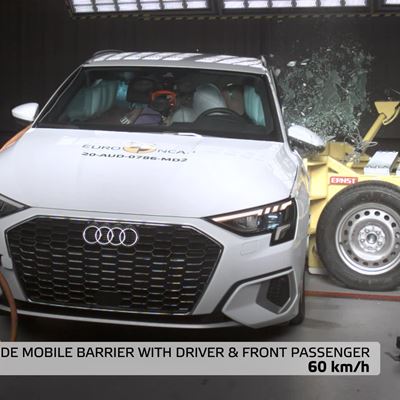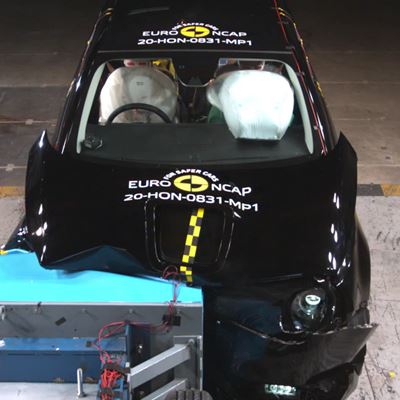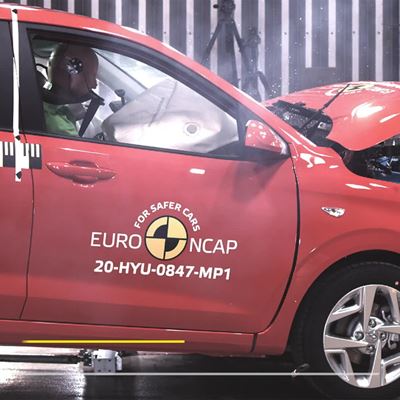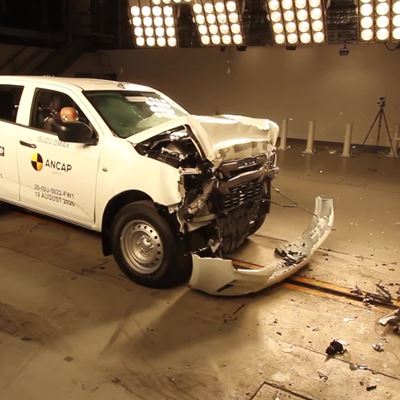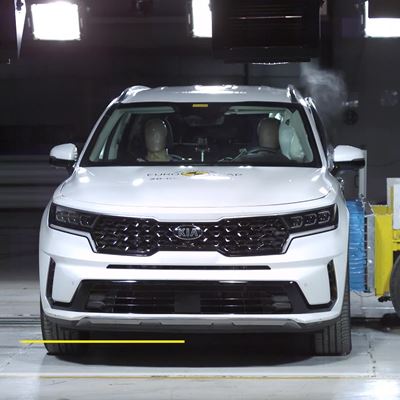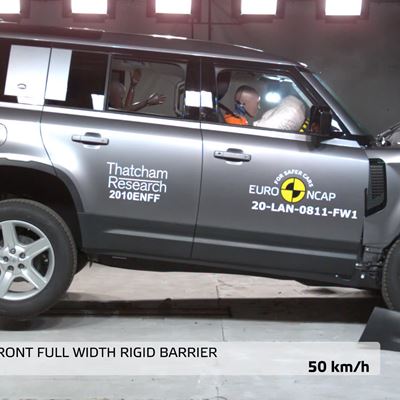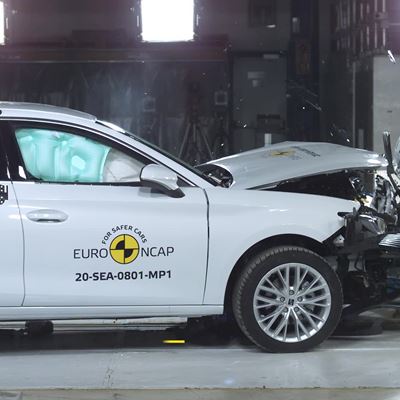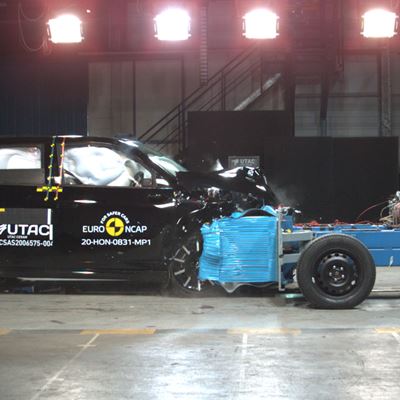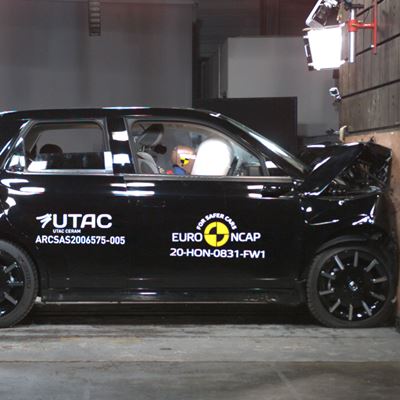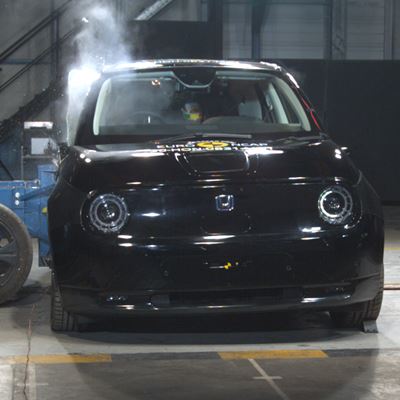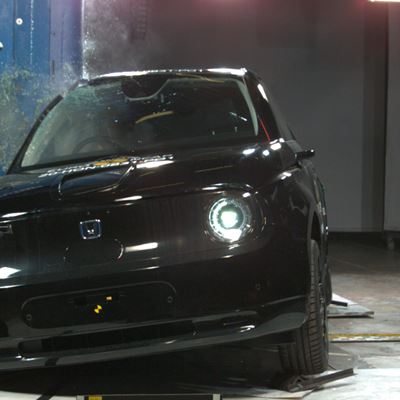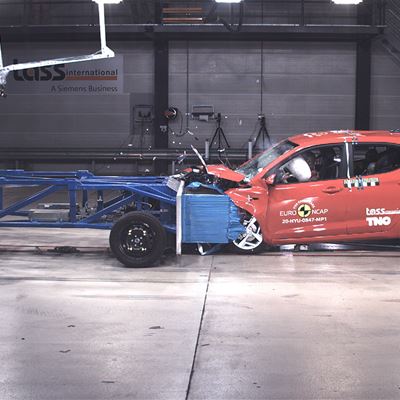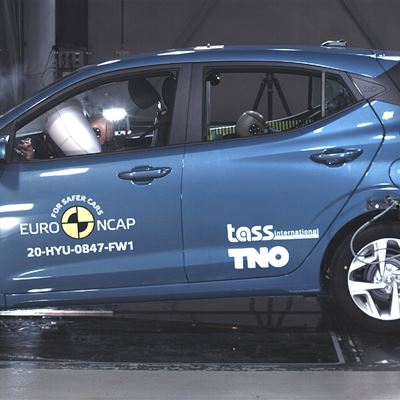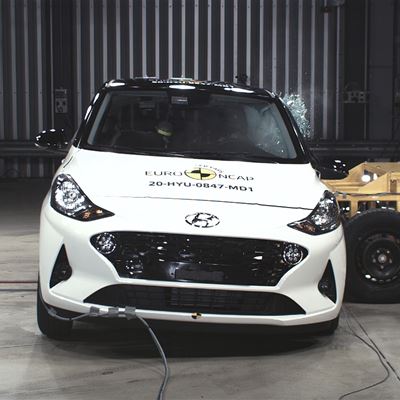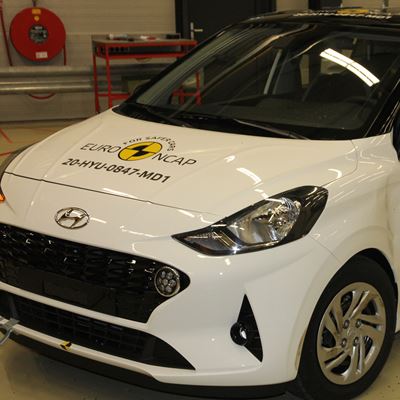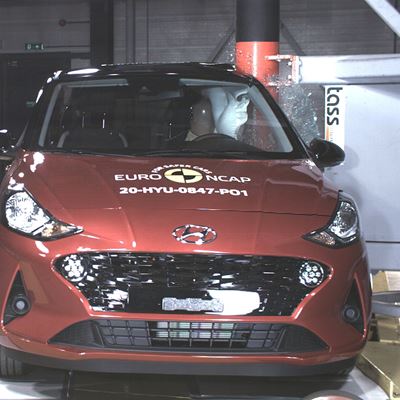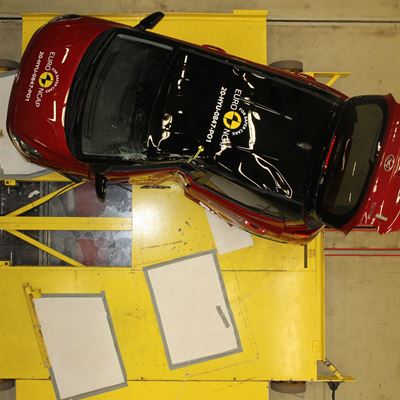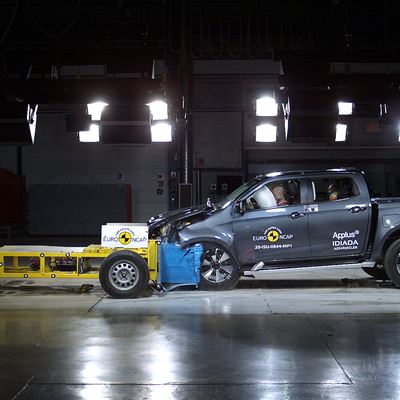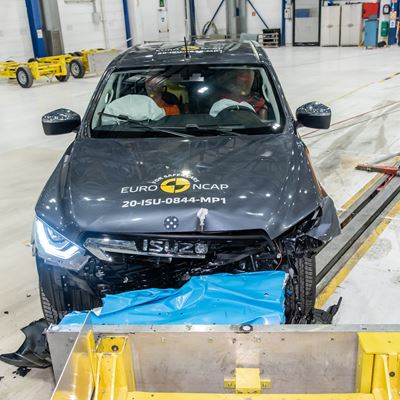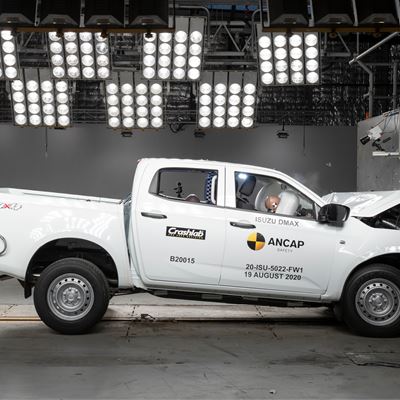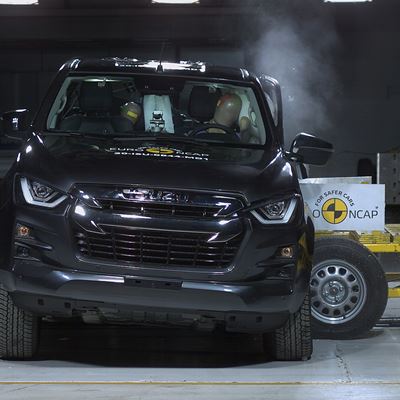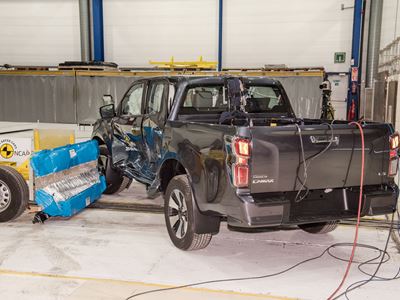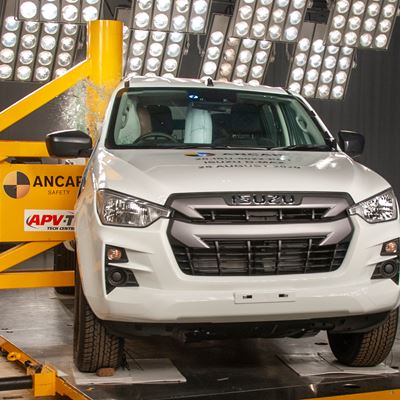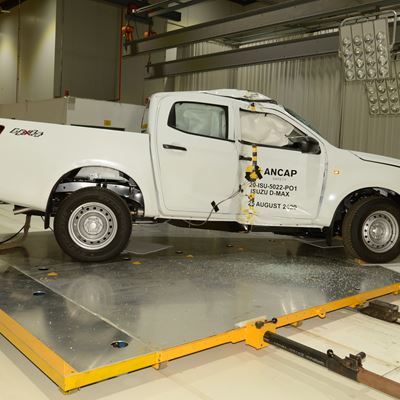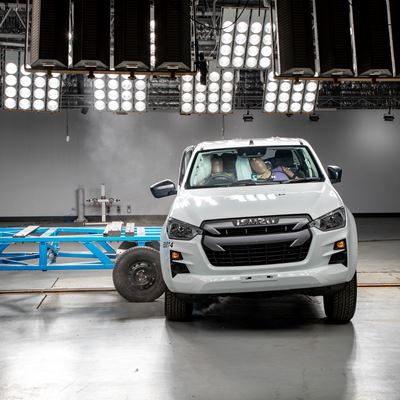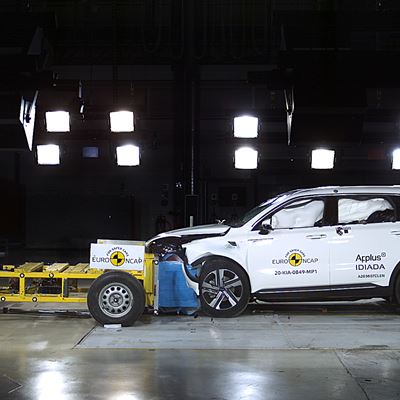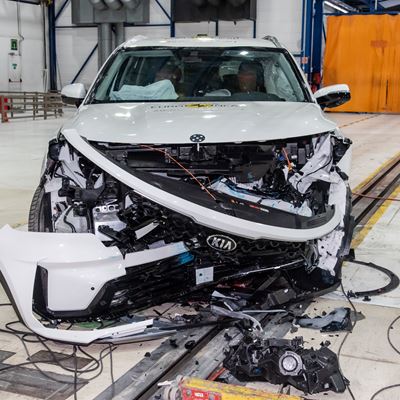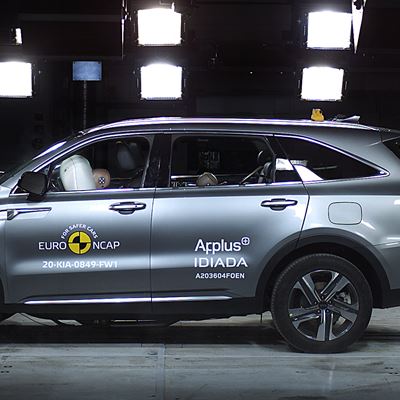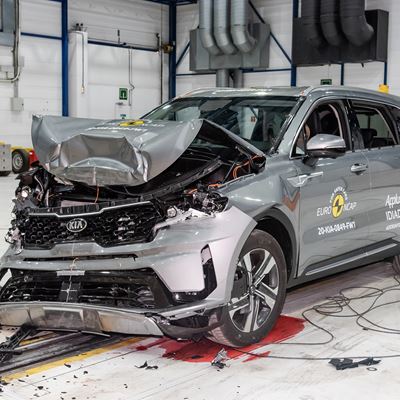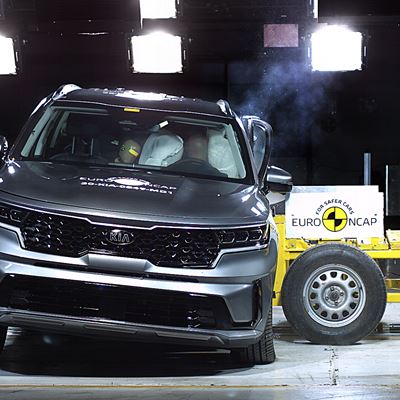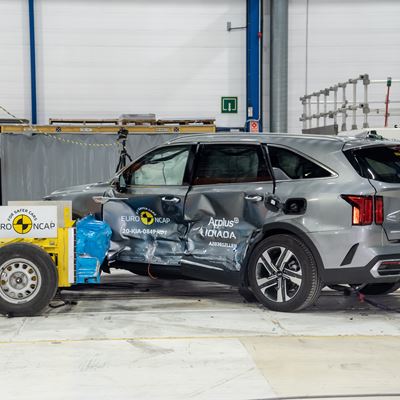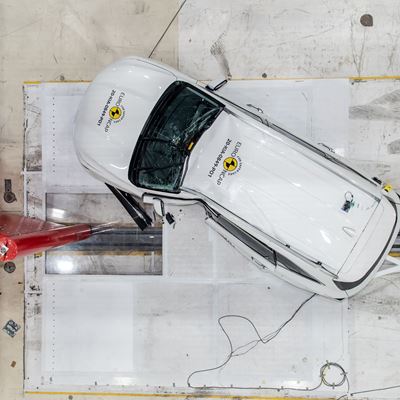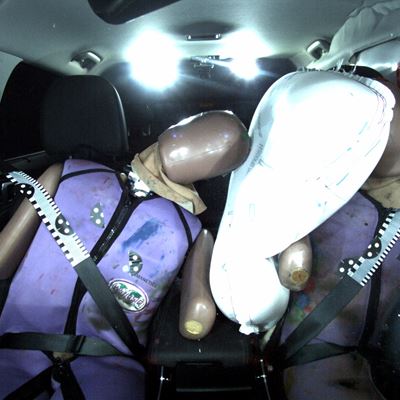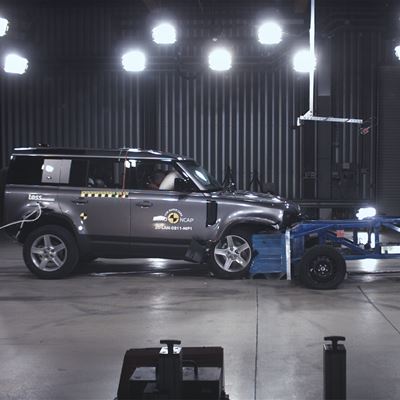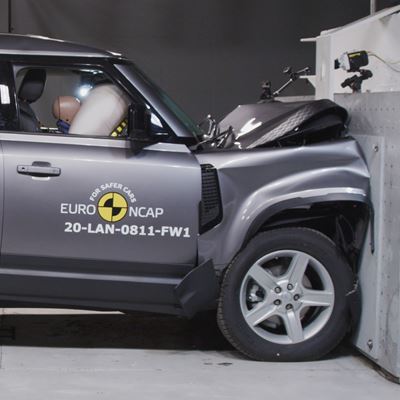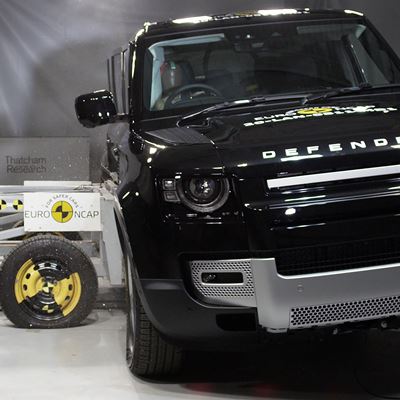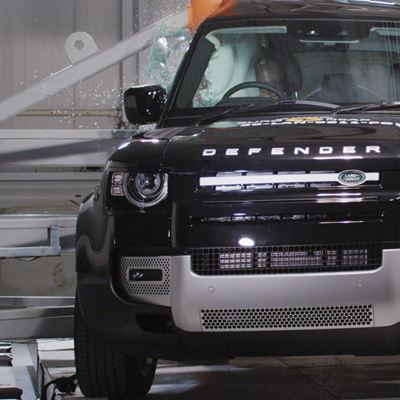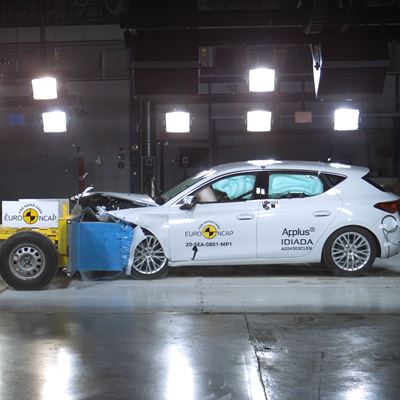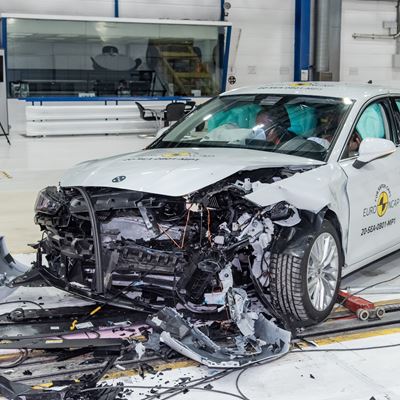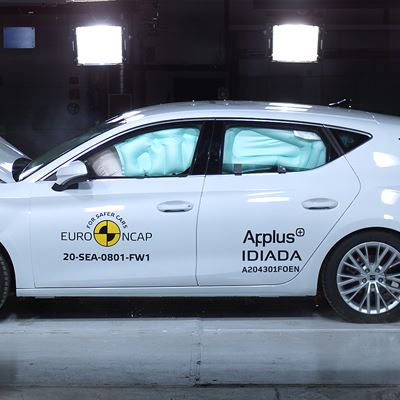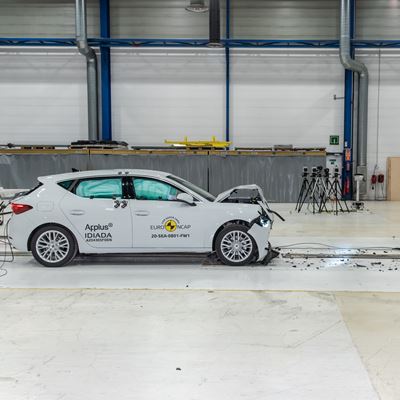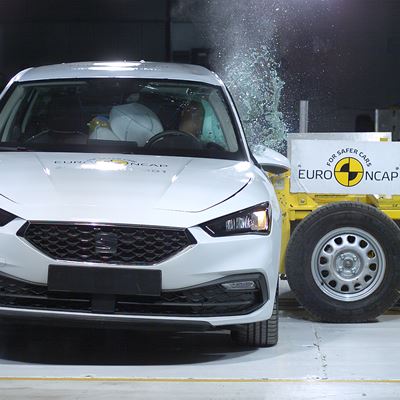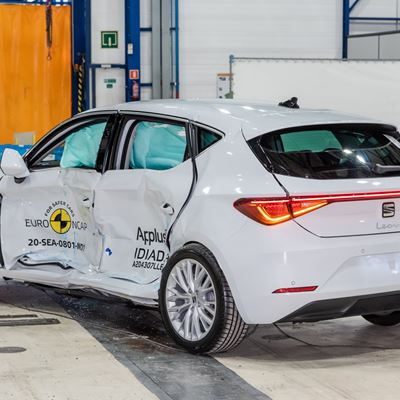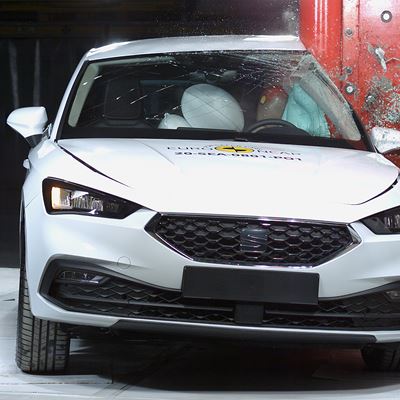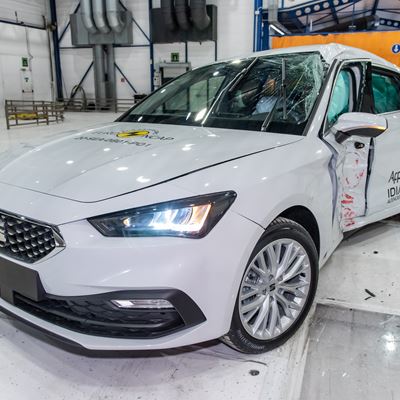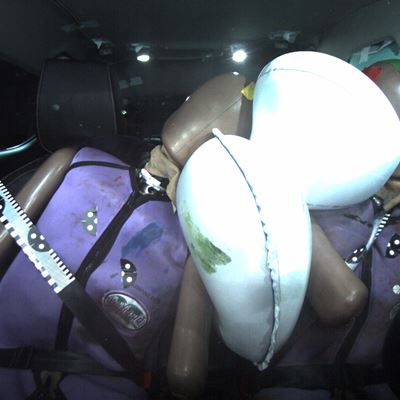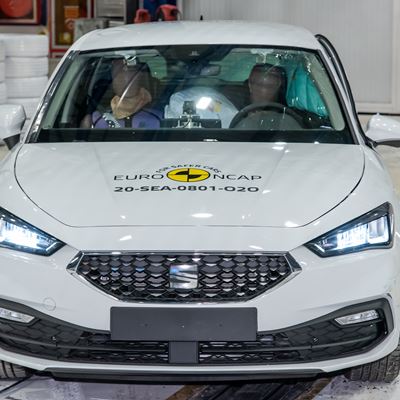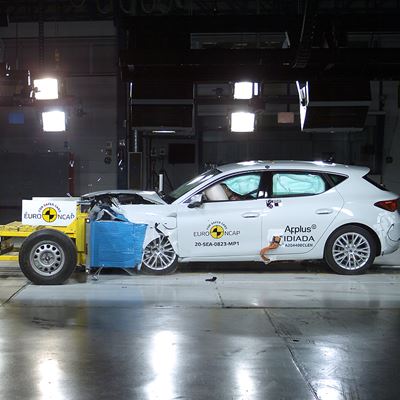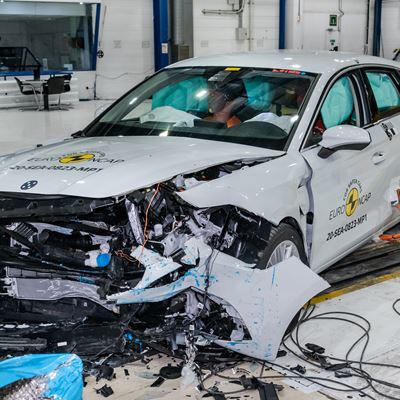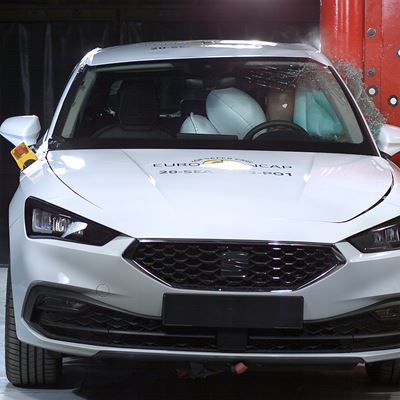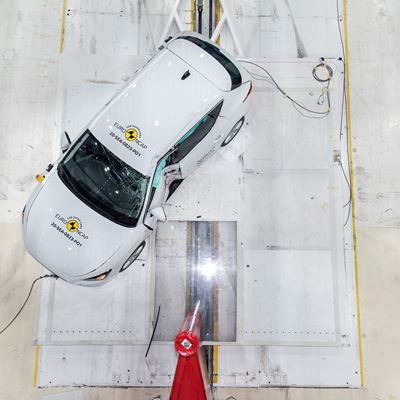Latest Euro NCAP Ratings Refocus Attention on Improving Vehicle Compatibility
Today, Euro NCAP publishes its fourth and largest batch of new results of the year. Seven cars were tested against Euro NCAP’s latest protocols. The Audi A3 Sportback, SEAT Leon, ISUZU D-Max, Kia Sorento and Land Rover Defender achieve the maximum five stars. The Honda e settles for four stars and the Hyundai i10 gets three.
Both the new Audi A3 Sportback and SEAT Leon sit on the same MQB-II platform as last year’s Golf VIII but now feature a centre airbag to improve far-side impact protection. When it comes to safety, the VW group siblings are in no way inferior to their famous cousin, but it is the Leon that, thanks to more compatible front-end design, has the upper hand with a very creditable 92 percent for Adult Occupant Protection.
The ISUZU D-MAX pick-up was rated by partner Australasian NCAP earlier this year. Some tests have been repeated by Euro NCAP to ensure a valid rating for the European market. Competing in a segment that is not famous for highlighting safety, the D-MAX crew cab is impressively equipped, with standard restraints, AEB and a new centre airbag. However, the mobile progressive deformable barrier test showed that its weight and front structure make the pick-up aggressive to other vehicles in a collision. The same is true of the Land Rover Defender: larger and heavier than previous models, the new Defender is equipped with modern driver-assistance systems to prevent and mitigate, as far as possible, collisions with other road-users. Another heavy-weight, the KIA Sorento, is the 4th generation large off-roader tested by Euro NCAP. It comes with new safety updates, including KIA’s first centre airbag and advanced e-Call system, and thanks to these retains its 5 stars, despite its underwhelming performance in the frontal offset crash.
Honda’s new electric supermini, the Honda e, represents the state of the art for green driving. It lacks some of the more advanced safety features present in the Honda Jazz but produces a respectable four-star rating in Euro NCAP’s latest tests, nevertheless. The more conventional Hyundai i10 brings up the rear in this batch of tests. In the full-width frontal impact, the driver’s pelvis slipped under the lap belt, a phenomenon known as ‘submarining’. The Hyundai i10 also offers a more limited AEB functionality then some other small cars, and ends up with three stars overall.
Euro NCAP’s Secretary General, Michiel van Ratingen, says “Poor crash compatibility between vehicles has been a problem for years. Now, in 2020, we have a frontal test which can assess how a vehicle performs in this regard and can penalise those cars that perform poorly. This is a first for safety assessment and should lead to better, more compatible designs in the future.”
Euro NCAP also evaluated three new hybrid and electric variants of cars tested in earlier years. The Renault CAPTUR 5-star rating of last year now also covers the CAPTUR E-TECH Plug-in Hybrid. The Peugeot’s 3008 SUV Hybrid, the 508 Hybrid and the electrified 208 join the 2016, 2018 and 2019 ratings respectively.
Editor’s note
For full results, visit www.euroncap.com or Euro NCAP's newsroom for journalists. For media information, please contact us at media@euroncap.com.
Follow us online and on social media:
Twitter
Facebook
Instagram
YouTube
About Euro NCAP
Euro NCAP organizes crash tests on new vehicles and provides motoring consumers with a realistic and independent assessment of the safety performance of some of the most popular cars sold in Europe. Established in 1997 and backed by several European Governments, motoring, consumer and insurance organizations, Euro NCAP has rapidly become a catalyst for encouraging significant safety improvements to new car design. Visit our website: www.euroncap.com.
Euro NCAP ratings strictly apply to vehicles of the specifications offered in Europe. The ratings do not necessarily apply to models offered in other regions, even when sold under an identical name, as production specification and equipment may vary.
MEDIA
PRESS RELEASE DOWNLOAD
RELATED
- Audi A3 - Standard Datasheet 2020
- Hyundai i10 - Standard Datasheet 2020
- Honda e - Standard Datasheet 2020
- Isuzu D-Max - Standard Datasheet 2020
- Kia Sorento - Standard Datasheet 2020
- Land Rover Defender - Standard Datasheet 2020
- SEAT Leon - Standard Datasheet 2020
- Audi A3 Sportback
- SEAT Leon
- ISUZU D-Max
- Kia Sorento
- Land Rover Defender
- Honda e
- Hyundai i10
- Renault CAPTUR E-TECH
- Peugeot 3008 SUV Hybrid
- Peugeot 508 Hybrid
- Peugeot 208
- Euro NCAP
- Euro NCAP Newsroom
- YouTube
RELATED
- Audi A3 - Standard Datasheet 2020
- Hyundai i10 - Standard Datasheet 2020
- Honda e - Standard Datasheet 2020
- Isuzu D-Max - Standard Datasheet 2020
- Kia Sorento - Standard Datasheet 2020
- Land Rover Defender - Standard Datasheet 2020
- SEAT Leon - Standard Datasheet 2020
- Audi A3 Sportback
- SEAT Leon
- ISUZU D-Max
- Kia Sorento
- Land Rover Defender
- Honda e
- Hyundai i10
- Renault CAPTUR E-TECH
- Peugeot 3008 SUV Hybrid
- Peugeot 508 Hybrid
- Peugeot 208
- Euro NCAP
- Euro NCAP Newsroom
- YouTube
CONTACTS
-
Cordelia WilsonMedia AdvisorUnited Kingdommedia@euroncap.com+44 7857 915 964
TAGS
MORE FROM LATEST RELEASE
-
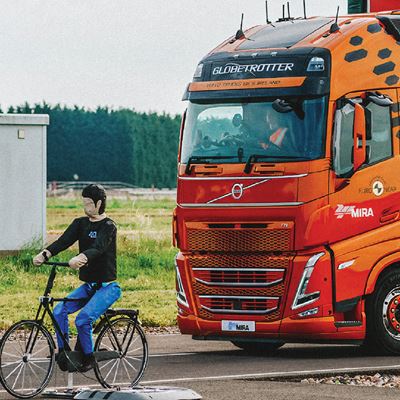


Euro NCAP reveals details of the first ever Heavy Truck safety rating tests at NCAP24
-
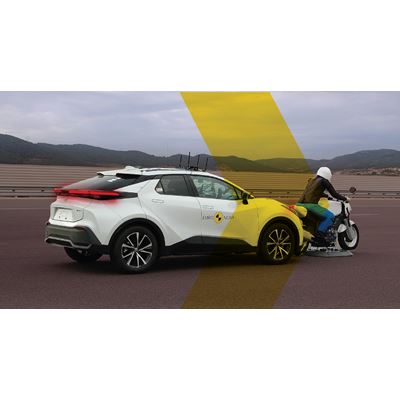


Euro NCAP releases safety results for three highly anticipated cars: the NIO EL6, the Toyota C-HR, and the Honda CR-V
-
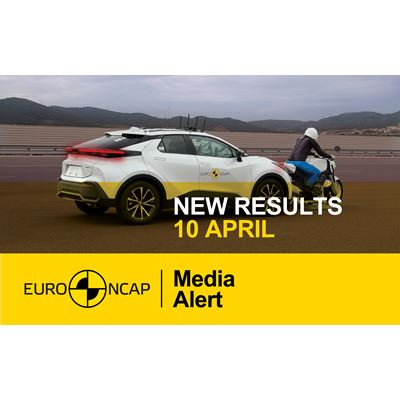


Euro NCAP to Launch New Round of 2024 Safety Results
-
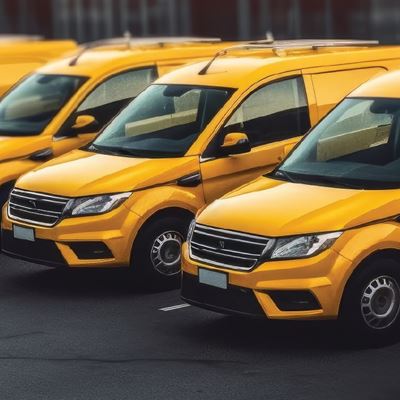


Euro NCAP calls on carmakers to make ADAS more widely available in small panel vans




